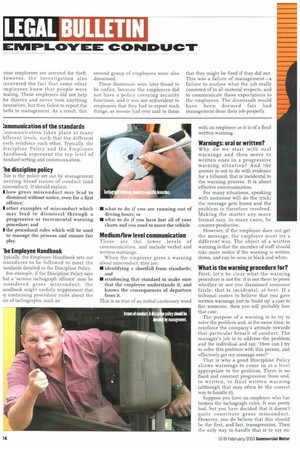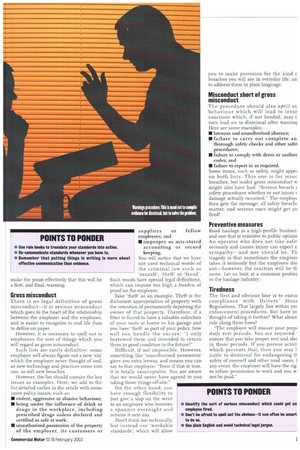What is the warning procedure for?
Page 24

Page 25

If you've noticed an error in this article please click here to report it so we can fix it.
First, let's be clear what the warning procedure is not for it is not there to prove whether or not you dismissed someone fairly; that is incidental, at best. If a tribunal comes to believe that you gave written warnings just to 'build up' a case to fire someone, then you will probably lose that case.
The purpose of a warning is to try to solve the problem and, at the same time, to reinforce the company's attitude towards that particular breach of conduct. The manager's job is to address the problem and the individual and say, "How can I try to solve this problem with this person, and effectively get my message over?"
That is why a good Discipline Policy allows warnings to come in at a level appropriate to the problem. There is no fixed and constant progression from oral, to written, to final written warning (although that may often be the correct way to handle it).
Suppose you have an employee who has broken the tachograph rules. It was pretty bad, but you have decided that it doesn't quite constitute gross misconduct. However, you do believe that this should be the first, and last, transgression. Then the only way to handle that is to say so; make the point effectively that this will be a first, and final, warning.




































































































































































